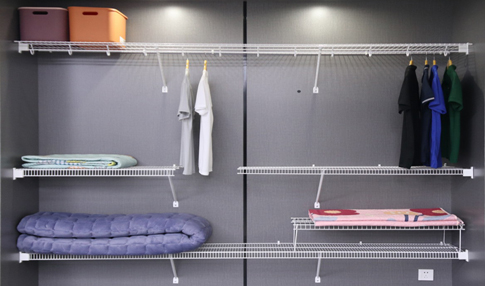Efficient Industrial Racks Solutions for Optimizing Warehouse Space and Storage Management
Dic . 10, 2024 02:49
Industrial Racks for Warehouse Applications Elevating Efficiency and Organization
In today's fast-paced industrial environment, effective warehouse management is paramount for businesses aiming to maximize productivity and minimize operational costs. One essential component of effective warehouse management is the use of industrial racks. These versatile storage solutions not only enhance the organization of goods but also optimize the use of available space, thereby improving overall efficiency in warehouse operations.
The Importance of Industrial Racks
Industrial racks serve as the backbone of any warehouse, providing a structured way to store a variety of products, from raw materials to finished goods. They enable businesses to utilize vertical space, which is often underused, allowing for a more efficient footprint. By stacking products vertically, warehouses can significantly increase their storage capacity without needing to expand their physical size. This is particularly important in urban areas where real estate costs are high.
Moreover, the right racking system can streamline warehouse operations. By categorizing and organizing inventory logically, employees can easily locate items and fulfill orders more quickly. This not only improves pick rates but also reduces the likelihood of errors, leading to increased customer satisfaction.
Types of Industrial Racks
There are several different types of industrial racks, each designed to accommodate specific storage needs
.1. Selective Racking This is the most common type of rack used in warehouses. It allows for the selection of individual pallets directly from the aisle, making it ideal for businesses with a wide variety of products and frequent stock rotation.
2. Drive-In and Drive-Through Racks These racks are designed for high-density storage. In drive-in systems, forklifts enter the rack structure to pick up items, while drive-through racks allow for entrance from both sides. Such systems are excellent for managing large quantities of similar products.
industrial racks for warehouse

3. Push Back Racks This type of racking system enables pallets to be stored several deep, utilizing a “last in, first out” (LIFO) method. Push back racks are ideal for businesses that need to store large quantities of similar products while still needing efficient access to items.
4. Pallet Flow Racks Utilizing gravity, these racks allow pallets to roll down to the picking area, following a “first in, first out” (FIFO) inventory method. This system is particularly beneficial for perishable goods or items with expiry dates.
5. Cantilever Racks Best suited for storing long, bulky items like lumber, piping, or furniture, cantilever racks offer an open design that allows for easy access from all sides.
Factors to Consider When Choosing Industrial Racks
When selecting the right industrial rack for your warehouse, several factors should be taken into account
- Load Capacity Consider the weight of the items being stored to ensure that the racks can safely accommodate them. - Space Requirements Measure your available warehouse space to determine the optimal rack size and configuration. - Accessibility Needs Think about how frequently items need to be picked and the best racking system that allows for efficient picking. - Regulatory Compliance Ensure that chosen racks comply with local safety regulations and standards to prevent accidents and liabilities. - Adaptability The chosen system should allow for future changes in inventory types or warehouse layout.
Conclusion
Industrial racks are more than just shelves; they are essential tools for improving the functionality of warehouse operations. By choosing the right type of racking system, businesses can enhance their storage capabilities, streamline workflows, and ultimately improve their bottom line. The investment in quality industrial racks will pay dividends in the long run, fostering a more organized, efficient, and safe working environment. As the industrial landscape continues to evolve, leveraging modern racking solutions will be crucial for businesses looking to stay competitive in the marketplace. With the right approach, warehouses can transform into well-oiled machines, ready to meet today’s supply chain challenges head-on.




















